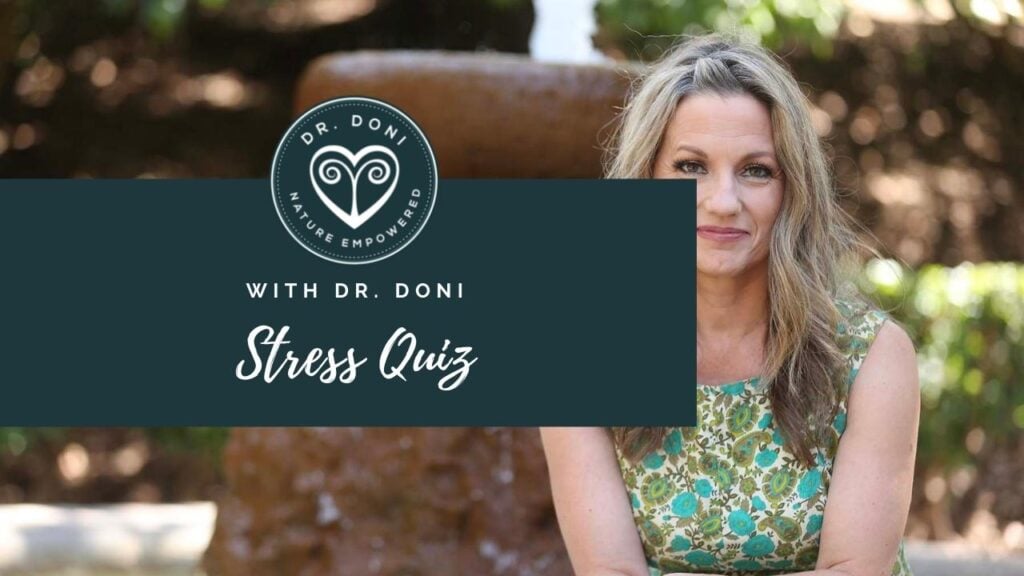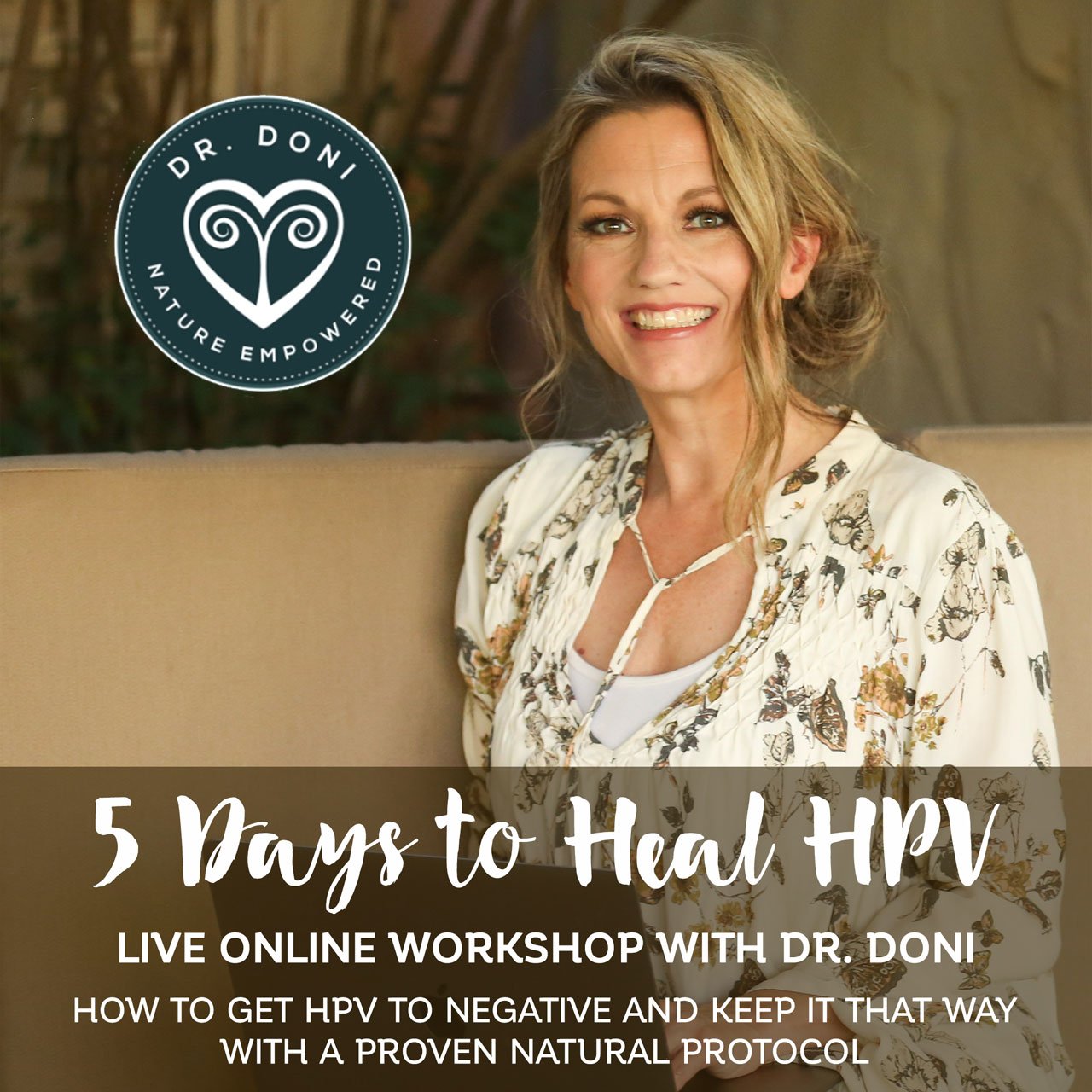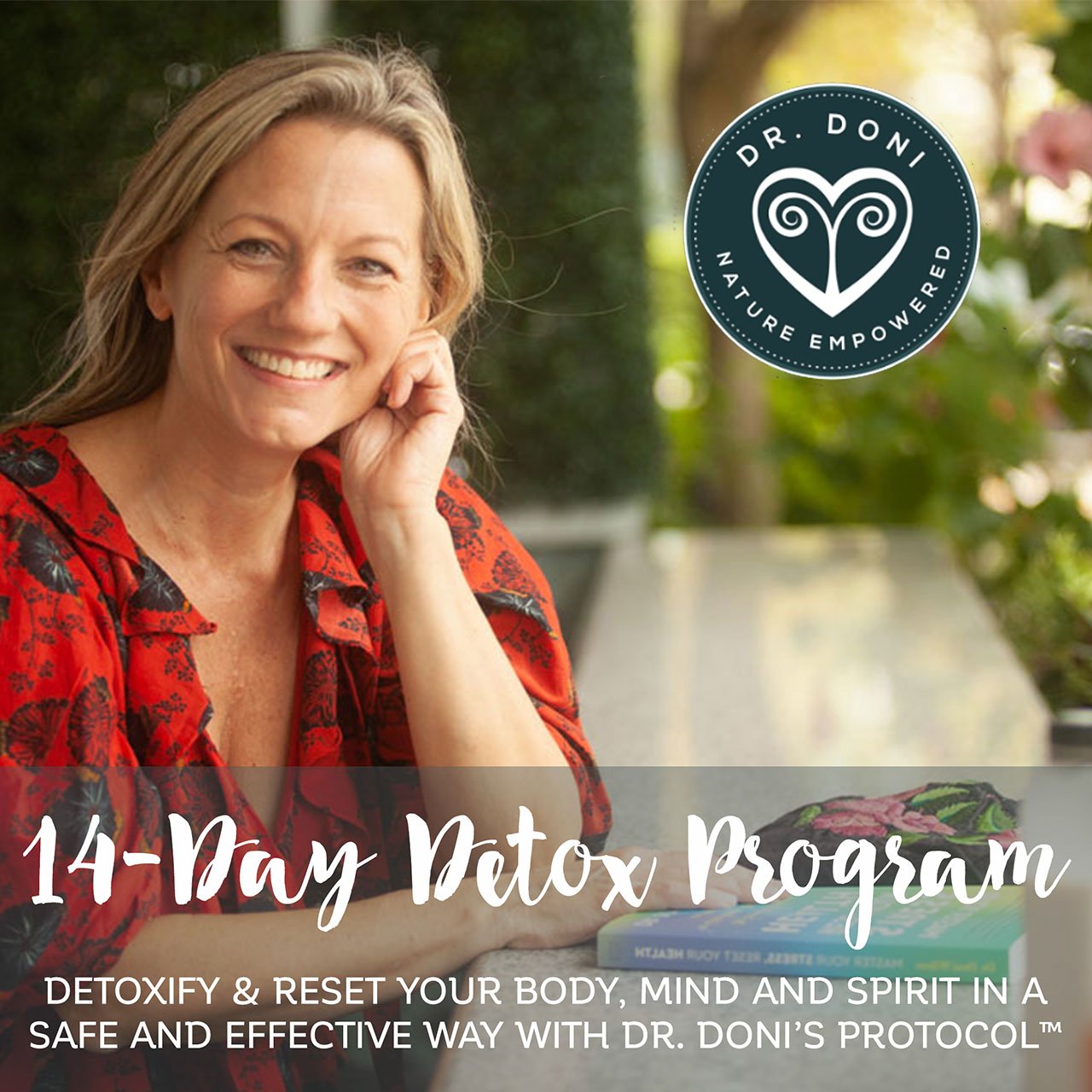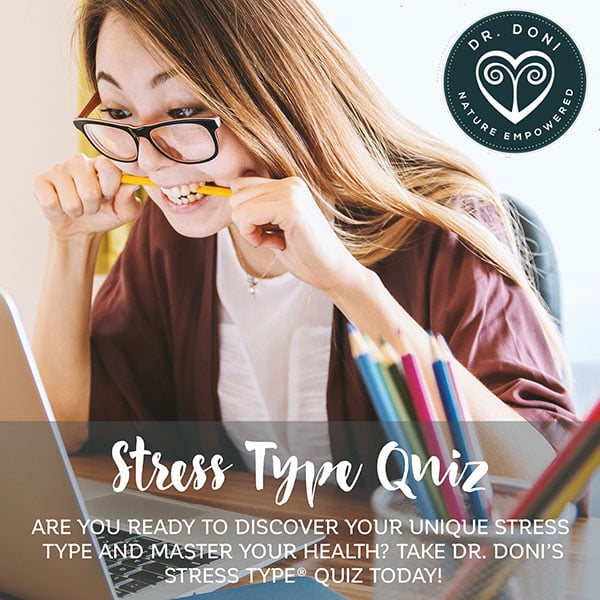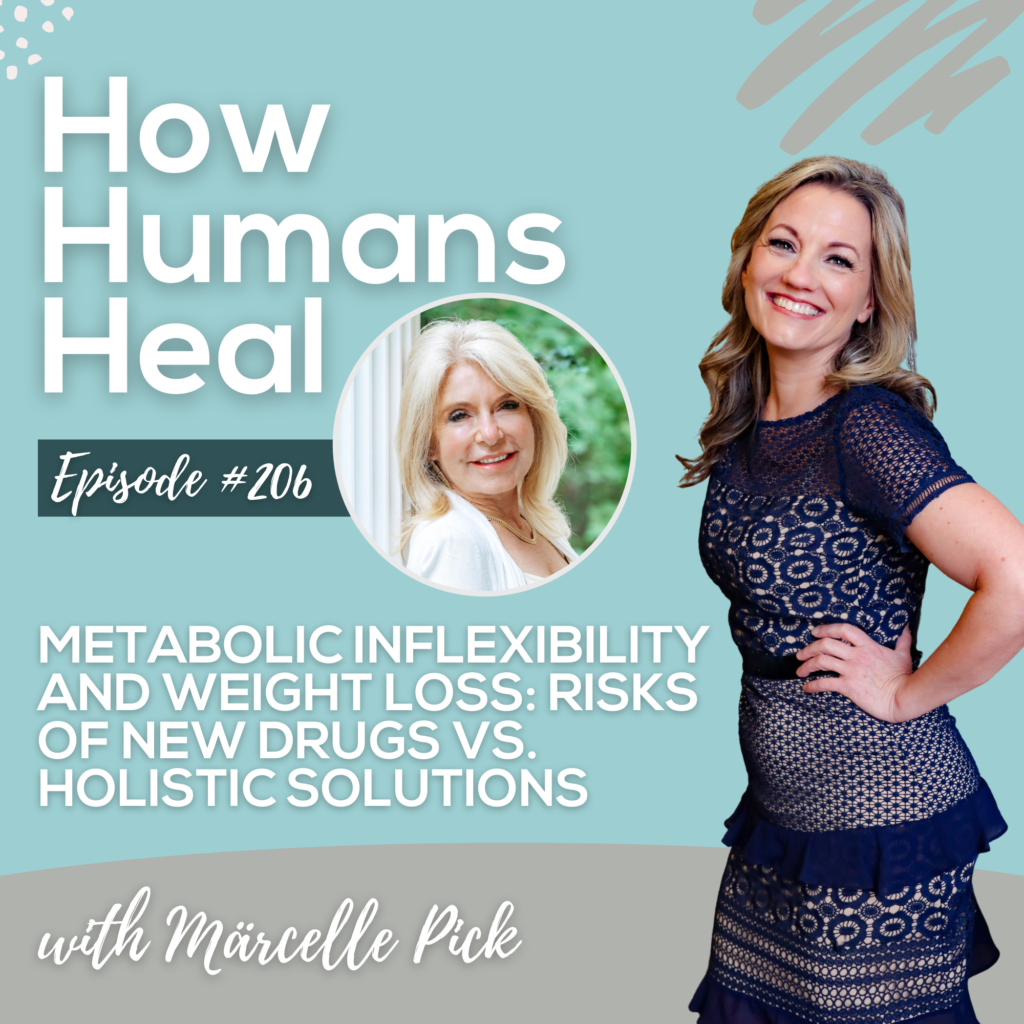
The Science Behind Stress and Trauma and How We Can Recover
- Home
- Stress & Adrenal Fatigue
- The Science Behind Stress and Trauma and How We Can Recover

Stress and trauma show up as burnout, rapid heart rate, and sleeplessness. But it’s not only that – stress and trauma also make us susceptible to most all health issues. Trauma is the result of adverse childhood events (ACEs) and events or abuse in adulthood. This includes toxic relationships, such as with a narcissist. The effects of stress are also triggered by daily demands, toxins in the environment, injuries, and infections.
While we can aim to reduce our exposure to stresses, ultimately, stress is part of being human. If we stress ourselves about trying to avoid it, we end up failing, which makes it seem as though it is a worthless endeavor.
I refuse to accept that notion.
The simple truth is that there is a science behind stress and trauma, and there’s also a remedy. And we desperately need that remedy if we want to increase our quality and length of life.
In this article, I share both the effects of stress and trauma, and the solutions I have identified and use with my patients. First, I want to explain why “solving” stress is such a priority.
Stress and Trauma Increase the Risk of Common Health Issues
In the past, we might blame our DNA for chronic diseases, but the truth is that genetics play a much smaller role[1] that we previously thought. Instead, the major player in determining health issues is stress exposure!
The morbidity and mortality due to stress-related illness is alarming. Emotional stress is a major contributing factor to the six leading causes of death in the United States: cancer, coronary heart disease, accidental injuries, respiratory disorders, cirrhosis of the liver and suicide[2].
In the Adverse Childhood Experiences (ACE) Study, a survey of over 13,000 adults, it showed that the more exposure you have to stressful experiences during childhood, the more likely they are to affect your long-term health[3]. In the study, three types of childhood stress exposure were assessed to assign a score: abuse, neglect, and household dysfunction.
The higher your ACE score, the higher your risk of diabetes, obesity, depression, suicide attempts, heart disease, cancer, and substance abuse, as well as sexually transmitted diseases (such as HPV) and broken bones.
Subsequent studies have identified additional childhood experiences that increase health risks and indicate that more than two-thirds of children experience at least one traumatic event before the age of sixteen[4]. Furthermore, it is also possible for the effects of stress to be passed onto future generations[5].
This is where most conversations about stress and trauma stop.
Recovery From Stress and Trauma Is Possible
I’ve been unwilling to believe that we can’t do anything about the effects of stress and trauma. Instead, I believe that our bodies can heal, recover, and reset, even after severe stress. I believe this after reading hundreds of research studies demonstrating that it is possible and observing thousands of patients experience stress recovery first hand.
Plus – I see it in my own body and experience. Like many of you, I experienced ACEs in my childhood. Subsequently I experienced severe menstrual pain, migraines, anxiety and depression. Yes, there are other contributing factors – such as gluten sensitivity, leaky gut, MTHFR gene variations and toxin exposure – all of which are turned on by trauma.
Over the past 20 years, I’ve used everything I research on myself. I’m my own guinea pig or study of 1, so to speak. And what I can tell you is – well – the migraines and menstrual pain are gone and I no longer struggle with anxiety and depression. My body and nervous system healed, and so can yours.
This means that we have a lot more control over our health (and stress responses) than we previously thought, and definitely more so than you’ll hear about in the conventional medical office.
How did I do it? It starts by understanding how stress affects us. We need to understand the disruptions caused by stress so we can reverse engineer the process and therefore create healing. (Yes, I loved math as a child.)
The Science Behind Stress and Trauma
There are three parts to the science behind stress and trauma that you need to know. They are the stress response, adrenal distress, and the symptoms of adrenal distress.
I’m often asked if stress in our bodies matters that much. I respond that if only matters if you are concerned with chronic diseases, infertility, cancer, dementia, and longevity.
1. What is a healthy stress response?
When a stress occurs in our lives, the fight or flight part of the sympathetic nervous system (SNS) kicks in by increasing our adrenaline levels. Then, the Hypothalamic-Pituitary-Adrenal (HPA) axis stimulates the adrenal glands[6] to make more adrenaline, as well as cortisol, to facilitate the stress response.
Once the stress passes, the levels go back to daily functioning. Optimally cortisol levels increase in the morning and gradually decrease through the day to the lowest level at night. Adrenaline, also known as epinephrine and norepinephrine, is the messenger that is produced each day in amounts needed for optimal functioning. And the vagus nerve, which is the main component of the parasympathetic nervous system, signals “rest and digest[7].” Learn more here: Adrenal Facts and Misconceptions.

2. What is adrenal distress?
When we are exposed to chronic stress, with one demand after the next, the receptors in the hypothalamus that turn off the signal to the adrenal glands stop working, leaving the HPA axis to continually signal the need for a stress response.
When this happens, cortisol and adrenaline levels can either remain elevated, even when there is no stress present, or the cortisol and/or adrenaline levels may become depleted. Researchers have referred to this situation as Adrenal Maladaptation Syndrome or adrenal dysfunction[8], which is different from severe adrenal disorders[9] such as Cushing’s Disease and Addison’s Disease. I refer to it as “adrenal distress.”
In my research, I identified five common patterns of disrupted cortisol and adrenaline[10]. I refer to them as the 5 Stress Types. I also developed an online quiz to help identify your stress type.
It’s important to know where your cortisol and adrenaline landed after stress exposure because the treatment is completely different. I’ll cover treatment in the next article in this series.
3. What are the symptoms of adrenal distress?
There are a number of well-established research articles that report that more than 90% of health issues are caused by stress and related to suboptimal cortisol and adrenaline levels.
Cortisol, for instance, is known to affect digestion, decreasing our ability to digest food, while causing leaky gut and disrupting the balance of gut bacteria (microbiome), as well as causing imbalanced hormone function (thyroid, insulin, estrogen, progesterone, testosterone, etc.), neurotransmitters (serotonin, GABA, dopamine), which disrupts mood, sleep and focus, and immune function, increasing the likelihood of allergies, autoimmunity, and viral infections, such as HPV.
Common symptoms are fatigue, anxiety, depression[11], indigestion, weight gain, joint pain, headaches, and frequent infections.
The Effects of Stress and Trauma Stick with Us, Unless We Take Action
Even though a stress has passed, and you are no longer in a difficult childhood, it is important to recognize that the effect of that stress remains in our bodies, even if we don’t feel “stressed.”
Like an imprint, stress and trauma leaves behind an invisible shift in our cortisol and adrenaline levels, as well as our nervous system, immune system, digestion and hormones, even down to a cellular and genetic level. Stress shifts genetic expression and results in a ripple effect that we may NOT notice or realize until years later.
It is now known that cortisol levels are a determinant of perceived age. Having optimal cortisol levels is associated with fewer signs of aging and improved longevity[12].
How is stress working behind the scenes to cause all this disruption?
The message of stress spreads throughout your body via the gut-brain axis. Stress causes intestinal permeability (leaky gut), which means the cells lining the intestines are not as healthy and allow undigested food to trigger inflammation. Stress also disrupts the balance of healthy bacteria, leading to an overgrowth of unhealthy bacteria[13], which produce toxins, and a decrease in the bacteria that produce nutrients and neurotransmitters. These imbalances don’t just affect your digestion. The information is sent to the nervous system (via the vagus nerve), and the rest of your body, triggering yet another stress response and cascade of negative symptoms from anxiety and depression, brain fog, fatigue, susceptibility to infections, and pain.
This is not meant to scare you – it is meant to inspire you to realize the importance of giving your body what it needs to recover and to get your cortisol levels back to optimal.
Instead of resolving to a life in emotional and/or physical pain, taking a forever expanding list of pharmaceutical medications in an attempt to manage the symptoms, all the while becoming more and more dependent on medications and interventions instead of actually giving your body and mind what it needs to heal.
We Can Heal from Stress and Trauma
Even though my father is a pharmacist, and my childhood was funded by pharmaceutical companies, I was unwilling to give up on my ability to recover from stress and trauma and become dependent on a substance that I knew would not resolve the issue.
Instead, I studied the human body, physiology, anatomy, biochemistry, nutrition, herbal medicine, and many other forms of medicine, including homeopathy, ayurvedic medicine, Chinese medicine, mindfulness-based stress reduction, biofeedback, and psychedelic therapy.
I learned that our neurotransmitters are made from nutrients. That means by providing the correct precursor nutrient, we can give our body what it needs to make more.
I learned that there are certain herbs and nutrients are better at reducing cortisol that is too high, or raising cortisol that is too low. They can also reset receptors without creating dependency or side effects[14]. There are not medications that can do that.
I learned that our nervous system can create new neural pathways[15]. This means we can rewrite our thought patterns, even thoughts that were deeply conditioned in childhood.
I learned that it is possible to reset genetic expression[16]. That means that even if you have a genetic tendency and genes that are currently expressing and causing health issues, you can turn them off.
I learned that even though we are exposed to many toxins in our life and environment, it is possible to help your body to detoxify them safely and effectively without having to feel worse.
I learned that leaky gut can heal and gut bacteria can be rebalanced.
I learned that healing doesn’t happen in a single dose or with a magic pill. Healing happens while we live our lives and throughout our lives. Stress is a part of life, but often we miss the fact that healing needs to be part of life too. We expect that our bodies should be able to take care of the healing without us doing anything intentionally to help them out.
I’m here to rewrite that programming. I know not everyone will understand where I’m coming from on all this. And I know it can even be overwhelming to realize that something you thought was true, isn’t true.
False: Stress is not related to your health issue and there’s nothing you can do but try to avoid stress. And when you fail, all you can do is take medication, which has side effects.
True: There is so much you can do to support your body and mind to recover from stress[17]. This has been proven for centuries by various systems of medicine, let alone thousands of research studies.
Identifying How Stress and Trauma Have Affected You
We need to first identify where you are starting. If we don’t know point A, we will not effectively reach point B, which is you feeling better.
How do we find out your point A?
I have researched and run so many different lab tests over the past 2 decades. Some through standard bloodwork that is covered by insurance.Some through specialty labs that tell us more about the function of your body, which is outside standard medical care and usually not covered by insurance.
With my strategic mind, I am constantly seeking to understand which tests provide the information I need to help guide my patients in the most efficient manner.
Here is what I’ve found:
- We need to know where your cortisol and adrenaline levels are at this point in time. That is not a test done in standard labs, or not with enough accuracy to provide the information we need. So, I recommend a lab that is able to provide the information we need, including cortisol levels morning, mid-day, evening and bedtime, and neurotransmitter levels. It is a urine and saliva test you collect at home and ship to the lab. You can find that test here.
- We need to know how stress and trauma have affected your digestion. Specifically, we need to know how severe is leaky gut and which foods are currently triggering inflammation and stress and working against you. There are many labs offering a similar, low-quality test. I encourage you to invest in a test through the private lab I work with because I see the best clinical outcomes based on this lab’s results. You can order the test here.
- We need to know how well your thyroid is functioning currently, and your insulin, as well as your ovaries/testes. We need to know whether you have nutrient deficiencies, and if there are toxins we need to address. These can be tested in blood work, even from a standard lab.
So you see, stress is not one-size-fits-all. We are not all affected by stress in the same way. Even though we are all human, and we all have a stress response system
Once I have all of this information, I have the pieces of the puzzle I need in order to help you reverse engineer your health by reversing the effects of stress and trauma.
Let me show you the step by step recovery process I identified.
The Three Phases of a Stress Recovery Protocol
While it can be tempting to get the cart before the horse, and start taking quick fixes, even if they are nutrient-based and natural, if we don’t follow the way our bodies naturally heal, then we are not likely to make much progress.
How do our bodies naturally heal?
Phase 1
First we need to turn off the overactive stress response. If we don’t do that, we won’t get anywhere. This is why the first phase of my Stress Recovery Protocol begins with getting out of stress mode.
The way to do this is not the same for everyone because stress mode is not the same for all of us. If your stress mode involves having elevated cortisol and/or adrenaline, we need to first decrease those levels. If your stress mode involves low serotonin and/or GABA, we need to address them.
What is the same for all humans who’ve been exposed to stress (which is all of us), is that we need Stress Recovery Activities. That is because we need to reset the vagus nerve and HPA axis. We need our body and stress response system to know it is safe to turn off the stress response. We need a daily routine of taking care of ourselves so that our bodies are not constantly being thrown off by unpredictability, blood sugar fluctuations and lack of recovery time.
This is why I created the 7-Day SelfC.A.R.E. Stress Reset. To help you start establishing a routine that will help you get out of and stay out of stress mode.

Phase 2
Once you’ve calmed out of stress mode, then you are ready to start healing from stress. That’s Phase 2.
In this phase we focus on supporting cortisol and/or adrenaline that is too low. Of course that is unique to you, so you need to know your stress type in order to implement effectively.
We also start healing leaky gut, addressing nutrient deficiencies and hormone imbalances, supporting your body to detoxify in a careful way that doesn’t cause other issues, and rebalance gut bacteria if that is an issue for you.
Once everything that was disrupted by stress has been dialed back into optimal ranges, we can move on to Phase 3.
Phase 3
Phase 3 is all about helping you to maintain your healthy new levels over time. What’s the use of correctly imbalances and then dropping everything you’ve learned and recreating the same issue? Yes, it happens sometimes, because we are human.
I’m here to help you become aware of the patterns in your life that end up setting you back so that you can take action to prevent that from occurring. By continuing implementing selfC.A.R.E. as I outline it, and raising awareness for the signals your body has been giving you all along, but you’d didn’t realize what they were, you’ll be able to steer clear of burnout.
I call this resiliency. To learn more about the three phases of the Stress Recovery Protocol, watch this video:
Where to Go From Here
I’ve made it possible to guide yourself through my Stress Recovery Protocol without even needing to have a one-on-one consultation with me.
- Get my book: Master Your Stress Reset Your Health
- Do the Stress Type Quiz
- Get the Stress Type Supplement Bundle (based on your Stress Type)
- Do the 7-Day SelfC.A.R.E. Stress Reset
- Continue by following the Stress Warrior Program
- And to get my proven protocol to heal leaky gut – do the Heal Leaky Gut Program
Another option, especially if you know you want to do the urine/saliva cortisol/adrenaline panel, is to:
- Do the Assess Your Stress Test
- Meet with me for a 1:1 Consultation (included with the test)
Or if you are wanting the most comprehensive support working with me directly, then you’ll want to:
- Set up an Comprehensive Breakthrough Session
- After we meet, I’ll provide a strategic plan including tests and a program customized to you.
And if you have HPV positive and are wondering how you can address it while healing from stress and trauma, be sure to listen in to my free masterclass – HPV Positive: The Answers You Need.
Recovery from Stress and Trauma: Bottom Line
Recovery from trauma, even narcissistic abuse, is possible. You can reset your hormones, nervous system, gut bacteria, neurotransmitters, gene expression, all of it.
It’s not an overnight fix. It requires you to see that healing is possible, and then to choose to prioritize yourself and your recovery. For some, the motivation is to improve the quality of their life. For others it is to lengthen their life. And still others are motivated by wanting to transform generational trauma and make it possible for future generations to live healthier, happier lives.
I encourage you to journal about what is motivating you because that is what you will need to remind yourself of each day as you break old patterns, hold yourself accountable to make essential tweaks in your routine, and have compassion for yourself in the process.
I’m here to guide you and to provide resources so that you don’t have to figure it all out on your own. As soon as you’re ready, I’ll guide you through the steps. It begins with one decision.
Wellness wishes always!

Connect with Dr. Doni:
- Facebook https://facebook.com/drdoniwilson
- Instagram https://instagram.com/drdoniwilson
- YouTube https://youtube.com/DoniWilsonND
- Newsletter: https://doctordoni.com/www (Weekly Wellness Wisdom)
- Podcast: https://doctordoni.com/podcast (How Humans Heal)
More Resources from Dr. Doni:
- Stress Type Quiz: Assess your adrenal function
https://doctordoni.com/quiz - Dr. Doni’s Book: Master Your Stress, Reset Your Health
https://doctordoni.com/book - Dr. Doni’s Facebook Group: Stress Warrior Stress Resiliency
https://facebook.com/groups/stresswarrior - HPV Recovery Guide (FREE)
https://doctordoni.com/ddpp/hpv-guide/ - FREE Masterclasses with Dr. Doni
https://doctordoni.com/masterclasses - FREE Guides from Dr. Doni
https://doctordoni.com/guides
Personalized Solutions:
- 14-Day Detox Program: You can start this transformation program anytime
https://doctordoni.com/detox-program - Say Goodbye to HPV (12-week Program): Begin the journey to freedom from HPV today!
https://doctordoni.com/hpv-12-week - If you’d like to meet with Dr. Doni one-on-one for your health, request a Health Breakthrough Session: https://doctordoni.com/breakthrough
Disclaimer: This specific article and all other Content, Products, and Services of this Website are NOT intended as, and must not be understood or construed as, medical care or advice, naturopathic medical care or advice, the practice of medicine, or the practice of counseling care, nor can it be understood or construed as providing any form of medical diagnosis, treatment, cure, or prevention of any disease.
References
[1] Rappaport SM. Genetic Factors Are Not the Major Causes of Chronic Diseases. PLoS One. 2016 Apr 22;11(4):e0154387. doi: 10.1371/journal.pone.0154387. PMID: 27105432; PMCID: PMC4841510. https://www.ncbi.nlm.nih.gov/pmc/articles/PMC4841510/
[2] Salleh MR. Life event, stress and illness. Malays J Med Sci. 2008 Oct;15(4):9-18. PMID: 22589633; PMCID: PMC3341916. https://www.ncbi.nlm.nih.gov/pmc/articles/PMC3341916/
[3] Felitti VJ, Anda RF, Nordenberg D, Williamson DF, Spitz AM, Edwards V, Koss MP, Marks JS. Relationship of childhood abuse and household dysfunction to many of the leading causes of death in adults. The Adverse Childhood Experiences (ACE) Study. Am J Prev Med. 1998 May;14(4):245-58. doi: 10.1016/s0749-3797(98)00017-8. PMID: 9635069.
[4] Copeland WE, Keeler G, Angold A, Costello EJ. Traumatic events and posttraumatic stress in childhood. Arch Gen Psychiatry. 2007 May;64(5):577-84. doi: 10.1001/archpsyc.64.5.577. PMID: 17485609.
[5] Maria A. Gartstein and Michael K. Skinner, “Prenatal Influences on Temperament Development: The Role of Environmental Epigenetics,” Development and Psychopathology 30, no. 4 (2018): 1269–303, doi:10.1017/S0954579417001730; Mallory E. Bowers and Rachel Yehuda, “Intergenerational Transmission of Stress in Humans,” Neuropsychopharmacology 41 (2016): 232–44, doi:10.1038/npp.2015.247.
[6] Sean M. Smith and Wylie W. Vale, “The Role of the Hypothalamic-Pituitary-Adrenal Axis in Neuroendocrine Responses to Stress,” Dialogues in Clinical Neuroscience 8, no. 4 (2006): 383–95, doi:10.31887/DCNS.2006.8.4/ssmith.
[7] Breit S, Kupferberg A, Rogler G, Hasler G. Front. Psychiatry, 13 March 2018
Sec. Psychological Therapy and Psychosomatics. https://doi.org/10.3389/fpsyt.2018.00044
[8] Hans Selye, “Forty Years of Stress Research: Principal Remaining Problems and Misconceptions,” Canadian Medical Association Journal 115, no. 1 (July 3, 1976): 53–6, https://www.ncbi.nlm.nih.gov/pmc/articles/PMC1878603/.
[9] Chrousos GP, Gold PW. The concepts of stress and stress system disorders. Overview of physical and behavioral homeostasis. JAMA. 1992 Mar 4;267(9):1244-52. Erratum in: JAMA 1992 Jul 8;268(2):200. PMID: 1538563.
[10] Donielle Wilson, The Stress Remedy: Master Your Body’s Synergy and Optimize Your Health. Empowering Wellness Press, 2013.
[11] Donielle Wilson, “Anxiety and Depression: It All Starts with Stress,” Integrative Medicine 8, no. 3 (June/July 2009): 42–5.
[12] Noordam R, et al. Cortisol serum levels in familial longevity and perceived age: The Leiden Longevity Study. Psychoneuroendocrinology. Volume 37, Issue 10, October 2012, Pages 1669-1675. https://doi.org/10.1016/j.psyneuen.2012.02.013.
[13] Carabotti M, Scirocco A, Maselli MA, Severi C. The gut-brain axis: interactions between enteric microbiota, central and enteric nervous systems. Ann Gastroenterol. 2015 Apr-Jun;28(2):203-209. PMID: 25830558; PMCID: PMC4367209.
[14] Adrian L. Lopresti et al., “An Investigation into the Stress-Relieving and Pharmacological Actions of an Ashwagandha (Withania somnifera) Extract,” Medicine 98, no. 37 (September 2019): e17186, doi:10.1097/md.0000000000017186.
[15] Poldrack RA. Neural systems for perceptual skill learning. Behav Cogn Neurosci Rev. 2002 Mar;1(1):76-83. doi: 10.1177/1534582302001001005. PMID: 17715587.
Davidson RJ, Lutz A. Buddha’s Brain: Neuroplasticity and Meditation. IEEE Signal Process Mag. 2008 Jan 1;25(1):176-174. doi: 10.1109/msp.2008.4431873. PMID: 20871742; PMCID: PMC2944261.
[16] Franzago M, Santurbano D, Vitacolonna E, Stuppia L. Genes and Diet in the Prevention of Chronic Diseases in Future Generations. Int J Mol Sci. 2020 Apr 10;21(7):2633. doi: 10.3390/ijms21072633. PMID: 32290086; PMCID: PMC7178197.
[17] Donielle Wilson, Master Your Stress Reset Your Health. BenBella Books. 2022.
Share this Post:
Dr. Doni Wilson
14 Day Detox Program
Take the Stress Type Quiz
Dr. Doni Social Media
Popular Posts

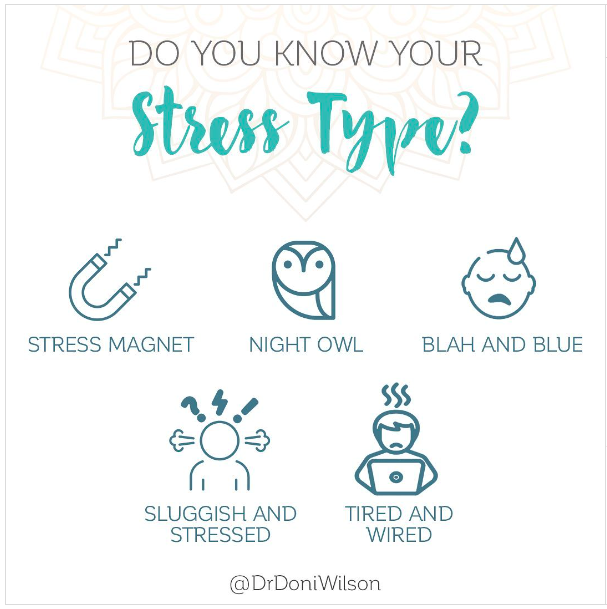
The 5 Burnout Types
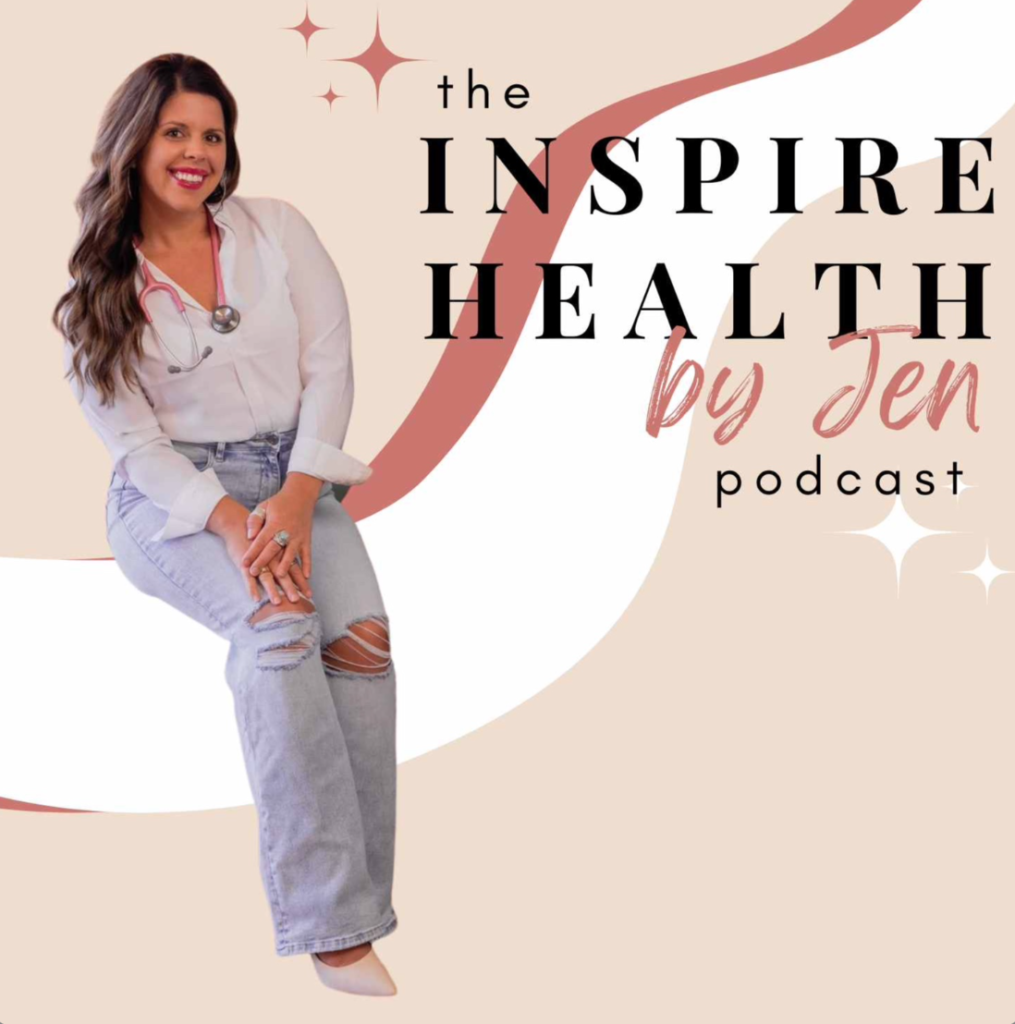
Healing HPV Holistically: Dr. Doni on the Inspire Health by Jen Podcast
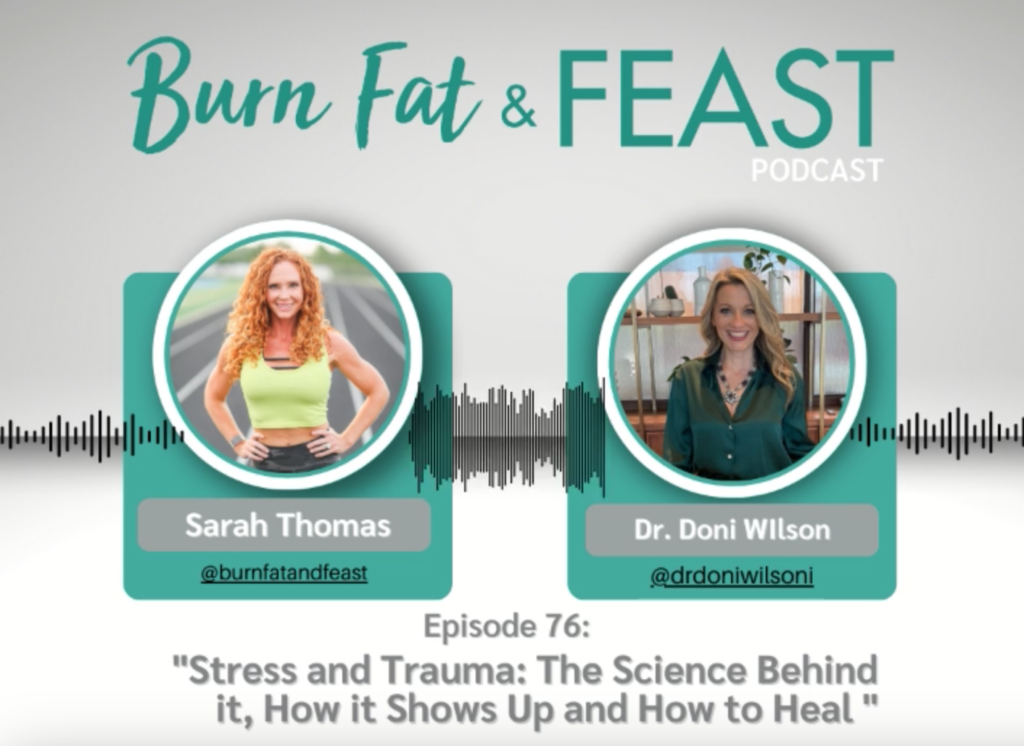
Recent Podcasts
Signup to receive our weekly newsletter with all the latest news, podcasts and special offers
New Book - Order Today!

SIMPLE PRACTICES for SHIFTING FROM YOUR STATE of STRESS to YOUR FLOW and FREEDOM
MASTER YOUR STRESS
RESET YOUR HEALTH
Order Now! Related Posts

What is making you susceptible to HPV?
I have been working with women who had abnormal cells on their cervix and/or vaginally, caused by HPV for over 20 years now. And while

The 5 Burnout Types
Did you know there are 5 burnout types? They are based on your Stress Type®, which is how your adrenal function has been affected by
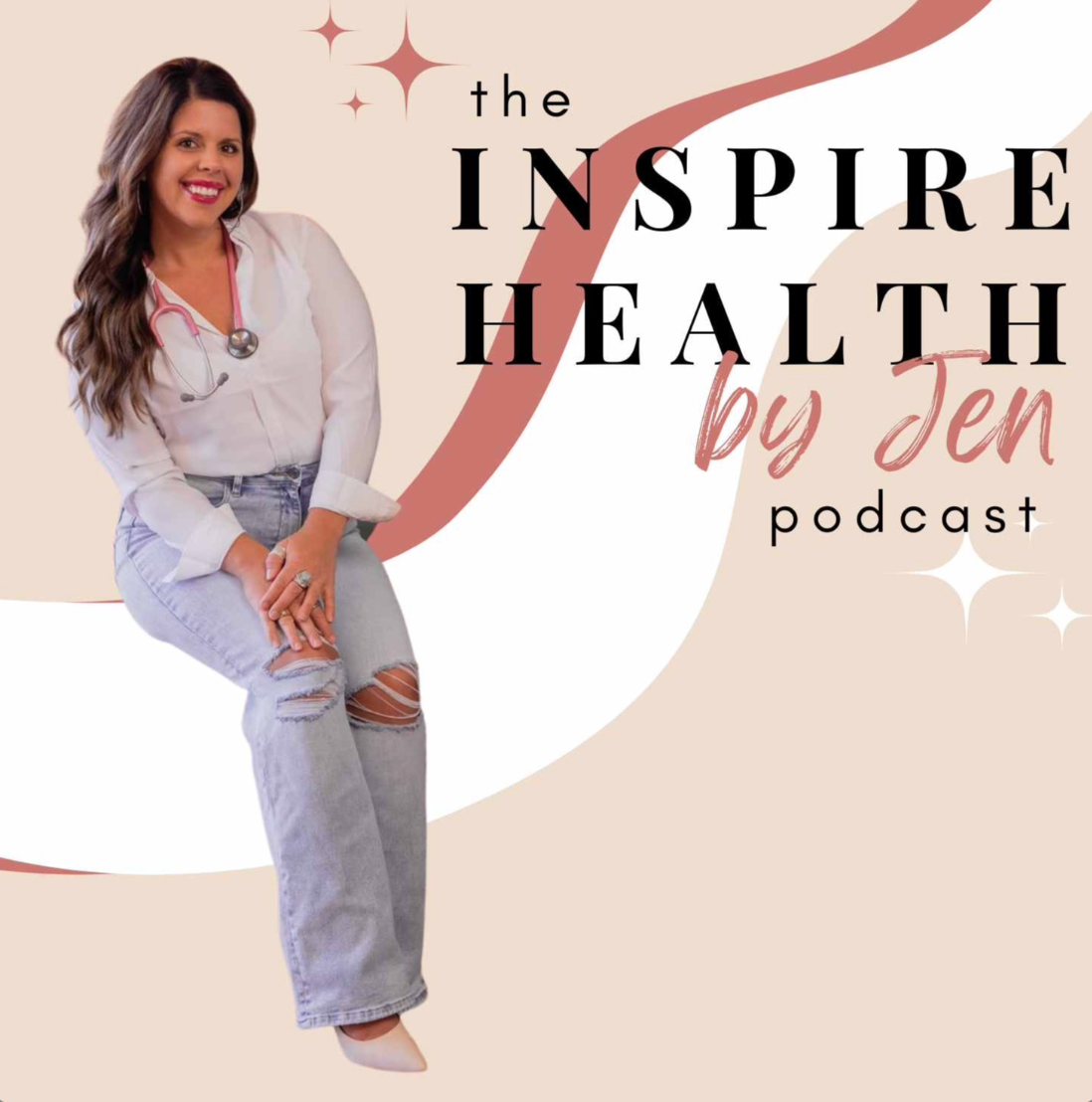
Healing HPV Holistically: Dr. Doni on the Inspire Health by Jen Podcast
Dr. Doni was interviewed by Jen Ciszewski on the Inspire Health by Jen Podcast, talking about how to heal away HPV from your body for good.
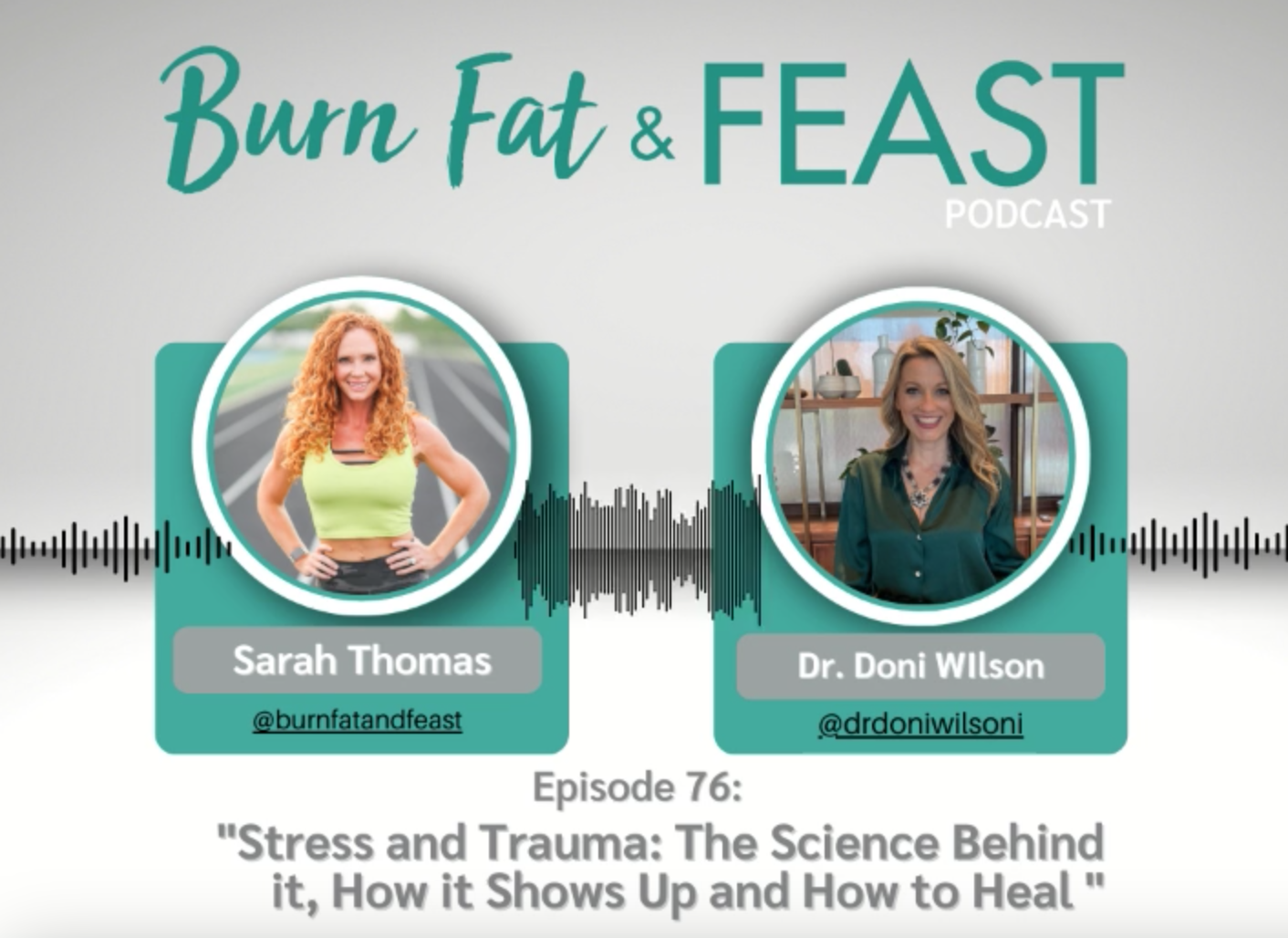
Stress and Trauma: The Science Behind It, How It Shows Up and How to Heal: Dr. Doni on The Burn Fat and FEAST Podcast
Dr. Doni was interviewed by Sarah B. Thomas on the Burn Fat and FEAST Podcast, talking about the impact of stress and trauma on our health and what to do to recover from them.

